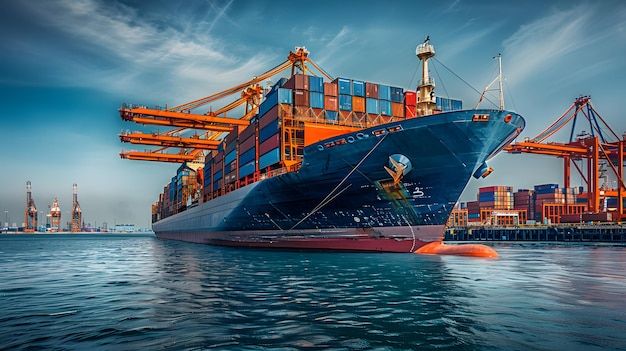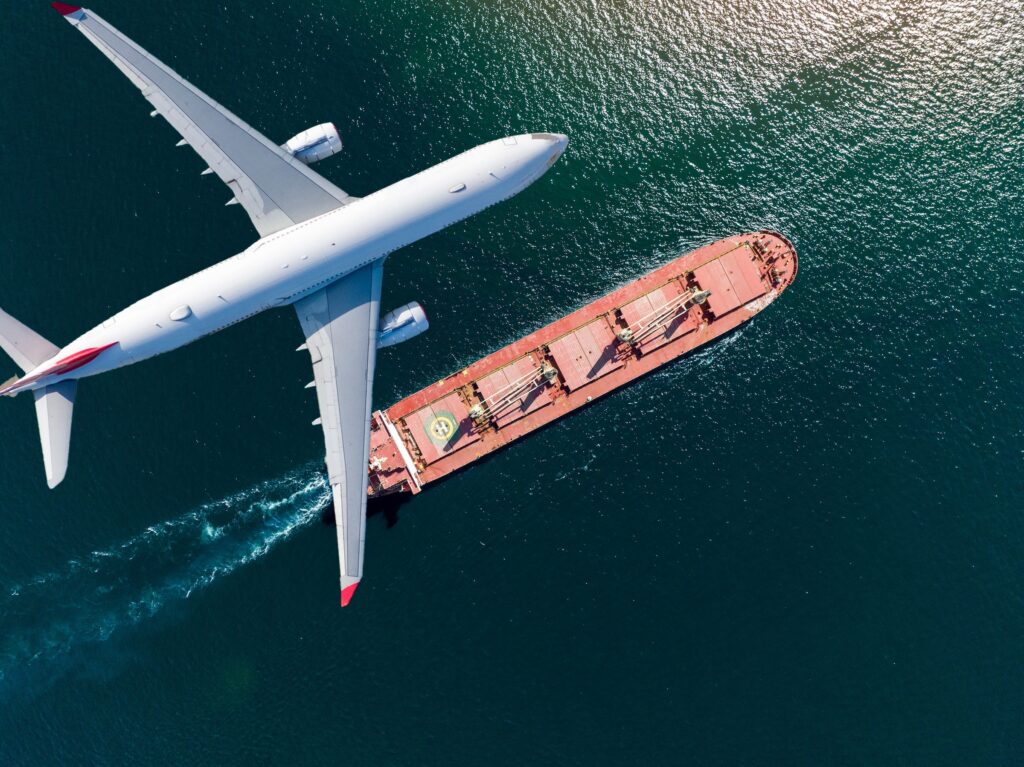- By TOP CHINA FREIGHT
- September 9, 2025
- Sea Freight, Shipping
Table of Contents
Sea freight from China to UK time is one of the most crucial factors importers consider when planning supply chain schedules. Transit delays, customs clearance, and seasonal congestion can impact your delivery. This guide explains timelines, cost structures, and practical tips to ensure smooth logistics.

What is the average sea freight from China to UK time?
On average, sea freight from China to UK takes 30 to 40 days, depending on the origin port, route, and customs clearance efficiency. For example, shipments from Shanghai may take slightly less than those from inland loading points. Additionally, weather, port congestion, and container availability can add extra days.
| Origin Port (China) | Destination (UK) | Average Transit Time | Notes |
|---|---|---|---|
| Shanghai | Felixstowe | 30–33 days | Fastest main route |
| Shenzhen | Southampton | 32–35 days | Popular for electronics |
| Ningbo | London Gateway | 33–36 days | Moderate speed |
| Qingdao | Liverpool | 35–40 days | Longer due to routing |
How do shipping methods affect sea freight time?
Although sea freight is the most cost-effective option, different shipping methods influence transit schedules.
| Shipping Method | Transit Time | Pros | Cons |
|---|---|---|---|
| FCL (Full Container) | 30–35 days | Secure, direct, less handling | Higher cost for small loads |
| LCL (Less than Container Load) | 35–45 days | Affordable for small cargo | Longer due to consolidation |
| Express Sea Service | 25–28 days | Faster transit, premium handling | Higher price than standard |
Therefore, businesses must balance between cost and urgency when selecting methods.
Why does sea freight from China to UK take so long?
Sea freight is inherently slower due to distance (over 20,000 km), vessel routing, and multiple port stops. Additionally, customs inspection, container handling, and weather can extend shipping time. While air freight takes only 5–7 days, it is far more expensive, making sea freight the preferred option for bulk imports.
What factors influence sea freight schedules?
Peak seasons (pre-Christmas or Chinese New Year) can delay unloading
Extra checks can add 2–5 days
Some shipments require stops in Singapore or Rotterdam
Global demand spikes may delay loading
Storms or typhoons may cause re-routing
How does sea freight compare to air freight from China to UK?

| Mode of Transport | Transit Time | Cost Estimate (per kg) | Best For |
|---|---|---|---|
| Sea Freight | 30–40 days | $0.30 – $0.60 | Bulk goods, low urgency |
| Air Freight | 5–7 days | $4 – $8 | Urgent, high-value cargo |
Moreover, while air freight ensures quick delivery, sea freight offers scalability and affordability, especially for businesses importing large container volumes.
What documents are needed for sea freight to the UK?

Having accurate documents reduces customs delays:
| Document | Purpose |
|---|---|
| Bill of Lading (B/L) | Proof of shipment and title |
| Commercial Invoice | Declares value of goods |
| Packing List | Details cargo contents |
| Import License | Needed for restricted items |
| Certificate of Origin | Verifies country of manufacture |
Ensuring complete paperwork can save 3–5 days of unnecessary delay.
Case Study: Reducing freight time for a UK retailer

A UK retailer importing electronics from Shenzhen faced delays of 10–12 days due to frequent LCL consolidation. By shifting to FCL shipments twice a month, they reduced transit time to 33 days consistently, saving thousands in stockout costs. Additionally, early booking during peak season prevented container shortages.
This case shows that planning container strategy directly affects delivery schedules.
Can you reduce sea freight from China to UK time?
Reserve containers 2–3 weeks before departure
Avoid transshipment hubs when possible
A hybrid option faster than standard
Avoid holiday congestion
They optimize customs clearance
How much does sea freight from China to UK cost with time in mind?
While cost varies by cargo size, the link between price and transit time is important.
| Container Type | Average Cost (USD) | Typical Transit Time |
|---|---|---|
| 20ft FCL | $1,200 – $1,800 | 30–35 days |
| 40ft FCL | $1,800 – $2,800 | 30–35 days |
| LCL (per CBM) | $30 – $60 per CBM | 35–45 days |
Cheaper rates often involve slower consolidated services, while premium express sea freight is more expensive but faster.
Should businesses choose FCL or LCL for faster sea freight?
- FCL is faster since the container moves directly, with less handling at ports.
- LCL is slower due to loading, unloading, and consolidation processes.
If delivery time is critical, FCL is recommended, even if not fully loaded. However, LCL suits small shipments where cost matters more than speed.
Conclusion
Sea freight from China to UK time typically ranges from 30 to 40 days, depending on ports, routes, and cargo type. While delays can occur due to customs, congestion, or weather, proper planning ensures predictability. Businesses should evaluate whether FCL or LCL suits their needs, book early to avoid shortages, and work with trusted forwarders to minimize risks. Ultimately, sea freight remains the most cost-effective solution for large-scale imports between China and the UK.
Need a Shipping Quote?
If you want expert guidance and peace of mind, our team is ready to assist.
TJ China Freight offers tailored solutions to help businesses of all sizes ship more reliably from China.

FAQs
Q1:How do I track sea freight from China to UK?
You can track via your Bill of Lading number on carrier platforms. Most forwarders also provide digital tracking portals with real-time updates.
Q2:What is the fastest sea freight route from China to UK?
Direct FCL services from Shanghai to Felixstowe are usually the fastest, averaging 30–33 days. Express sea freight reduces time by 5–7 days.
Q3:Can customs clearance delay shipping time in the UK?
Yes, customs inspections may add 2–5 days. Ensuring accurate documents like invoices and certificates helps reduce clearance delays.
Q4:When is the best season to ship from China to UK?
Avoid peak times like September–December or pre-Chinese New Year. Off-peak months offer shorter waiting times and more affordable rates.
Q5:Do container shortages affect shipping schedules?
Yes, container shortages can delay loading by up to a week. Booking early with a reliable forwarder prevents disruptions in sea freight schedules.
